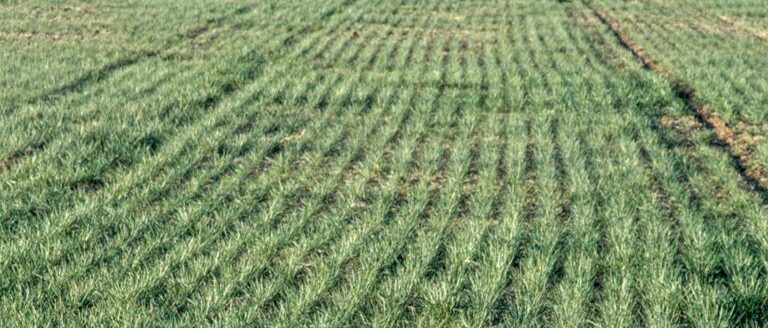Co-produced by NOAA’s National Integrated Drought Information System and the Southern Regional Climate Center, a recent webinar discussed the drought impacts in Arkansas, Kansas, Louisiana, Mississippi, New Mexico, Oklahoma, Tennessee, and Texas.
Speakers included: John Nielsen-Gammon, Southern Regional Climate Center; Jeff Grashel, Lower Mississippi River Forecast Center; Nelun Fernando, Texas Water Development Board; Drew Daily, Oklahoma Department of Agriculture, Food and Forestry, forestry services; Mary Love Tagert, Department of Agriculture and Biological Engineering at Mississippi State University; Wes Lee, Oklahoma Mesonet; and David Sathiaraj, Trabus Technologies. Topics included a winter weather outlook, a discussion about river levels and water supply issues, wildfire concerns, agricultural impacts of the drought and some moisture monitoring tools.
Winter weather outlook
Nielsen-Gammon was tasked with taking stock of the varying conditions across the High Plains region and looked at what might happen going forward. Nearly every state in his region is affected by drought in some way, shape or form. Compared to last year, it’s a mixed bag as to who is better off or in worse condition.
Some areas are going into their first year of drought in the southern parts of the region. The majority of Oklahoma has been in extreme drought, despite a brief reprieve in early summer. Texas wasn’t so fortunate and lacked the respite like its neighbor to the north. In the eastern part of the region, there’s been two or three episodes of drought including over the winter in Arkansas and Mississippi and summer in all three states.
“And now, perhaps it’s the most widespread and all three have drought present right now as we speak,” Nielsen-Gammon said.
There has been some moisture in the region due to remnants of hurricanes and tropical storms, but nothing of significance.
“That’s nibbled away at some of the drought areas, but it’s certainly not enough to produce any widespread improvements,” he said.
Nielsen-Gammon doesn’t believe any of the remaining weather possibilities in the region during November would have a significant impact on the drought statuses in the region. But in the seasonal outlook—December through February—he doesn’t expect there to be much change for the region.
Going forward Nielsen-Gammon is hopeful there is a warming trend for the ocean temps. “Every single run” of a model shows indications of neutral conditions.
“Possibly by summer, even trending towards significant above normal [precipitation] with recoveries and a transition to El Nino,” he said.
Measuring up
Lee’s role at the Oklahoma Mesonet is as a faculty member of the Department of Biosystems and Agricultural Engineering, which is housed at the National Weather Service in Norman, Oklahoma. He provides educational assistance on weather and climate to agricultural producers.
As of mid-November, Oklahoma is in the 12th driest period over the last 100 years. Parts of the state are in a D2 or higher drought rating and have been so for much of 2022 according to the U.S. Drought Monitor.
With 100% of the state abnormally dry or in some level of drought, how has it impacted the crops? Lee said in Oklahoma, wheat has the largest number of acres and in 2022 those areas were about 60% of 2021’s production numbers.
“So [there’s] a significant reduction in wheat bushels produced and you can see that that it was one of the lowest yielding per acre yields that we’ve had, at least in recent times,” he said.
Since the rest of the production numbers for other crops haven’t come in yet, Lee used forecast numbers, and those “seem to be getting worse every time they come out with a report,” Lee said.
Cotton producers have taken it on the chin and the expected yield is 210,000 bales or 70% lower than it was in 2021. Yields also were dependent upon whether or not irrigation was available.
Sign up for HPJ Insights
Our weekly newsletter delivers the latest news straight to your inbox including breaking news, our exclusive columns and much more.
In Oklahoma, corn acres aren’t very substantial and those irrigated acres will likely hold their own as far as yields go.
“The yields are expected to hold on pretty well although it’s still well below the five-year average on a corn forecast,” Lee said.
Grain sorghum acres have been mostly the same but are at their lowest levels in five years.
“Yields are expected to come in at 26 bushels, which would be significantly below where we were last year especially,” he said.
Soybeans too are affected by the water situation, but Lee didn’t have any specific numbers for the crop just yet.
“It is going to be the lowest turnout in soybeans that we’ve had over this six-year period of time,” he said.
Forage acres are big in Oklahoma too, as it is one of the larger cattle producing states in the country. Hay inventories are down 47% over a year ago numbers.
“Hay prices are very expensive this year. I would say probably up 100% of normal,” Lee said. “If we look at say a five-year average for high prices, the quality is down because we’re baling up everything we can get to go through baler.”
Cattle are needing to be fed, but the cow herd numbers are shrinking. Lee believes about 13% of the cowherd has already been liquidated due to drought and it may even reach 14% by the end of 2022.
“Of our seven sale barns that are federally reported, we’re running 50% more cows year over year being sold,” he said. “And when I say cows I’m talking cull cattle or older cattle that had to be reduced because of lack of forage.”
Spring calves have also been sold earlier than normal, and Lee estimates about 40% to 50% have already been to market.
“Because we were trying to stretch our forage supplies as far as we can make them go,” he said.
Kylene Scott can be reached at 620-227-1804 or [email protected].




